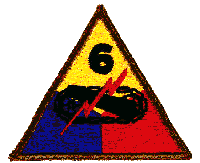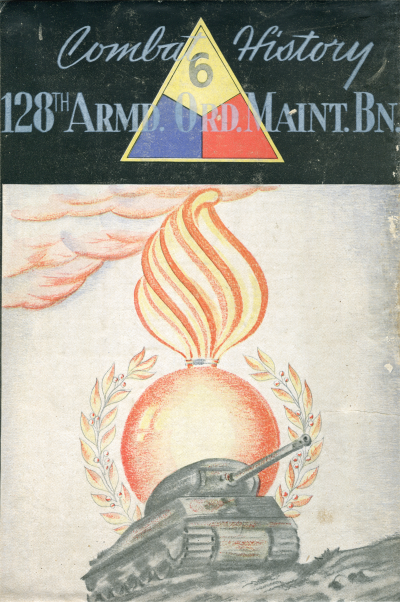5912 Bridgeview Court
Cincinnati, OH 45258
Make checks payable to: George F. Hofmann, Ph.D.
ALSO: Through Mobility We Conquer: The Mechanization of U.S. Cavalry
This is new book featuring General Grow and a few units from the 6th Armored Division, just published (June 2006) by the University Press of Kentucky.
Available from the author at $39.00 including postage and handling (a 20% discount). See ordering instructions above.
ALSO: Camp Colt to Desert Storm: The History of U.S. Armored Forces
Edited by George F. Hofmann and Gen. Donn A. Starry, this book won the Army
Historical Foundation's distinguished book award for 2000. It is the only complete
history of U.S. armored forces from the advent of the tank in battle in World War I through
the campaign to drive Iraq out of Kuwait in 1991. $28.00, including postage and
handling. See ordering instructions above.
ALSO: Cold War Casualty
George F. Hofmann's meticulously researched and
documented retelling of the General Robert Grow's tragic court martial in 1952. An indictment
of army politics and corruption of the military justice system. $21.00, including
postage and handling. See ordering instructions above.
6th AD units
Sixth Armored Division units included:
Unit Decorations, World War II
68th Tank Battalion -- Distinguished Unit Citation,
for Landroff, France (Company A cited), and for Han-sur-Nied,
France (Company B cited. French Croix de Guerre with Silver Gilt
Star for Han-sur-Nied, France (Company B cited).
69th Tank Battalion -- Distinguished Unit Citation,
for Bastogne (Company C cited).
9th and 50th Armored Infantry Battalions -- French
Croix de Guerre with Palm, for Brest, France.
212th Armored Field Artillery Battalion -- French Croix
de Guerre with Silver Gilt Star, for Lan Froicourt, France.
231st Armored Field Artillery Battalion -- French Croix
de Guerre with Silver Gilt Star, for Han-sur-Nied, France.
86th Cavalry Reconnaisance Squadron -- Distinguished
Unit Citation, for action at Eder River, Germany (Troop D cited),
and Prum River, Germany (Troop A cited).
25th Armored Engineer Battalion -- Distinguished Unit
Citation, for action at Wardin, Belgium, and Prum River,
Germany (3rd platoon, Company C cited).
777th Anti-Aircraft Artillery Battalion -- French Croix
de Guerre with Silver Gilt Star, for Avranches, France.
 Medal
of Honor Recipients
Medal
of Honor Recipients
GAMMON, ARCHER T.
Rank and organization: Staff Sergeant, U.S. Army, Company A, 9th Armored
Infantry Battalion, 6th Armored Division.
Place and date: Near Bastogne, Belgium, 11 January 1945.
Entered service at: Roanoke, Va.
Born: 11 September 1918, Chatham, Va.
G.O. No.: 18, 13 February 1946.
Citation: He charged 30 yards through hip-deep snow to knock out a machinegun
and its 3-man crew with grenades, saving his platoon from being decimated
and allowing it to continue its advance from an open field into some nearby
woods. The platoon's advance through the woods had only begun when a machinegun
supported by riflemen opened fire and a Tiger Royal tank sent 88mm. shells
screaming at the unit from the left flank. S/Sgt. Gammon, disregarding
all thoughts of personal safety, rushed forward, then cut to the left,
crossing the width of the platoon's skirmish line in an attempt to get
within grenade range of the tank and its protecting foot troops. Intense
fire was concentrated on him by riflemen and the machinegun emplaced near
the tank. He charged the automatic weapon, wiped out its crew of 4 with
grenades, and, with supreme daring, advanced to within 25 yards of the
armored vehicle, killing 2 hostile infantrymen with rifle fire as he moved
forward. The tank had started to withdraw, backing a short distance, then
firing, backing some more, and then stopping to blast out another round,
when the man whose single-handed relentless attack had put the ponderous
machine on the defensive was struck and instantly killed by a direct hit
from the Tiger Royal's heavy gun. By his intrepidity and extreme devotion
to the task of driving the enemy back no matter what the odds, S/Sgt. Gammon
cleared the woods of German forces, for the tank continued to withdraw,
leaving open the path for the gallant squad leader's platoon.
BEYER, ARTHUR O.
Rank and organization: Corporal, U.S. Army, Company C, 603d Tank Destroyer
Battalion.
Place and date: Near Arloncourt, Belgium, 15 January 1945.
Entered service at: St. Ansgar, lowa.
Born: 20 May 1909, Rock Township, Mitchell County, lowa.
G.O. No.: 73, 30 August 1945.
Citation: He displayed conspicuous gallantry in action. His platoon,
in which he was a tank-destroyer gunner, was held up by antitank, machinegun,
and rifle fire from enemy troops dug in along a ridge about 200 yards to
the front. Noting a machinegun position in this defense line, he fired
upon it with his 76-mm. gun killing 1 man and silencing the weapon. He
dismounted from his vehicle and, under direct enemy observation, crossed
open ground to capture the 2 remaining members of the crew. Another machinegun,
about 250 yards to the left, continued to fire on him. Through withering
fire, he advanced on the position. Throwing a grenade into the emplacement,
he killed 1 crewmember and again captured the 2 survivors. He was subjected
to concentrated small-arms fire but, with great bravery, he worked his
way a quarter mile along the ridge, attacking hostile soldiers in their
foxholes with his carbine and grenades. When he had completed his self-imposed
mission against powerful German forces, he had destroyed 2 machinegun positions,
killed 8 of the enemy and captured 18 prisoners, including 2 bazooka teams.
Cpl. Beyer's intrepid action and unflinching determination to close with
and destroy the enemy eliminated the German defense line and enabled his
task force to gain its objective.
Hey, this site looks like it was created in 1996 with Notepad!
Well, that would be because this site WAS originally created in 1996 with Notepad.
This is an all-volunteer, spare-time activity. Family & job take priority over upgrading the appearance of a free, personal web site. If I'm going to devote four hours to this site on a weekend, and I can either upload a new scanned document, or make the home page pretty, the content will win every time.
When (if) I retire, I'll devote some time to the appearance of the site. In the meantime, benefit from the content here, and try to ignore the retro ambience.
Where'd the info about the books go?
I've moved the publications information to a separate
page so that this page would load faster.
If this is your first visit to the Sixth Armored Division home page,
please spend some time and explore. I've put a lot of information on this
site: maps, excerpts from official histories, personal stories from Division
veterans, etc.
On This Web Site...
 Publications
about the Super Sixth: Excerpts from out-of-print official histories; links
to battalion histories, and more, including:
Publications
about the Super Sixth: Excerpts from out-of-print official histories; links
to battalion histories, and more, including:
 Personal
Stories from veterans of the Super Sixth.
Personal
Stories from veterans of the Super Sixth.
 Color
campaign map of the 6th Armored. Medium-res copies available for downloading.
Color
campaign map of the 6th Armored. Medium-res copies available for downloading.
 Information
about the 212th AFA and 6th Armored Division veterans' associations.
Information
about the 212th AFA and 6th Armored Division veterans' associations.
 Unofficial
Home Page of the 212th AFA.
Unofficial
Home Page of the 212th AFA.
 Notes
about Division Commander Maj. Gen. Robert W. Grow (from 212th AFA History).
Notes
about Division Commander Maj. Gen. Robert W. Grow (from 212th AFA History).
 Personal
notes about this web site
Personal
notes about this web site
 Links
to related sites
Links
to related sites
"There is one great thing that you men will be able to say after
this war is over and you are home once again. You may be thankful that
twenty years from now when you are sitting by the fireplace with your grandson
on your knee and he asks you what you did in the great World War II, you
won't have to cough, shift him to the other knee as say 'Well, your granddaddy
shoveled sh*t in Louisiana.' No sir, you can look him straight in the eye
and say, 'Son, your granddaddy rode with the great Third Army and a S.O.B.
named Georgie Patton!' "
-- General George S. Patton, in a speech to Third Army troops in England,
1944
Version researched by
Charles M. Province for "The Unknown Patton".
NOTE: Remove the question mark and use common sense when reconstructing the email address below when sending mail.
This page is maintained by Bruce Frederick, ?super6th at verizon period net,
son of 212th FA veteran Lt. Arthur M. Frederick, deceased.
I am not a veteran.
Change log





